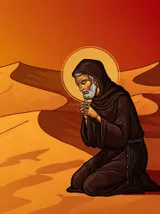Course Review
What is a litany?
a) A form of responsive petition used in public liturgical services and private devotions to implore God's aid or to appease His just wrath.
✅ CORRECT!
b) A type of chant used in the Catholic Church.
❌ Try again
c) A form of dance used in religious ceremonies.
❌ Try again
d) A type of religious relic.
❌ Try again
Question explanation
Explanation: The article states that a litany is a well-known and much appreciated form of responsive petition, used in public liturgical services and private devotions, for common necessities of the Church, or in calamities - to implore God's aid or to appease His just wrath.
What is the origin of the Roman "Stations" and the "Litania Major" or "Romana"?
a) They originated from the Christian litany that replaced the festival of Robigalia celebrated by the heathens.
❌ Try again
b) They were created by Pope Gregory the Great during a pestilence caused by an overflow of the Tiber.
❌ Try again
c) They originated from the processions held in Rome by the pope and people, especially during Lent, to a different church each day.
✅ CORRECT!
d) They originated from the continuous repetition of the "Kyrie" used today at the consecration of a church.
❌ Try again
Question explanation
Explanation: According to the article, the processions held in Rome by the pope and people, especially in Lent, to a different church each day, led to the creation of the Roman "Stations" and the "Litania Major" or "Romana".
What was the purpose of the litany called "Septiformis" commanded by Gregory the Great?
a) To celebrate the festival of Robigalia.
❌ Try again
b) To hold a station at S. Valentino Outside the Walls.
❌ Try again
c) To implore God's aid during a pestilence caused by an overflow of the Tiber.
✅ CORRECT!
d) To consecrate a church and place relics in the altar.
❌ Try again
Question explanation
Explanation: The article states that in 590, when a pestilence caused by an overflow of the Tiber was ravaging Rome, Gregory the Great commanded a litany which is called "Septiformis"; on the preceding day he exhorted the people to fervent prayer and arranged the order to be observed in the procession.
What was the Council of Vaison decree regarding the "Kyrie Eleison"?
a) It prescribed the use of the "Kyrie Eleison" in the Roman Breviary at the "Preces Feriales" and in the Monastic Breviary for every "Hora".
❌ Try again
b) It passed a decree to keep up the singing of the "Kyrie Eleison" at Mass, Matins, and Vespers.
✅ CORRECT!
c) It called for the continuous repetition of the "Kyrie" at the consecration of a church.
❌ Try again
d) It decreed that litanies be called planœ, ternœ, quinœ, septenœ depending on the number of repetitions of the "Kyrie".
❌ Try again
Question explanation
Explanation: The article states that the Council of Vaison in 529 passed the decree: "Let that beautiful custom of all the provinces of the East and of Italy be kept up, viz., that




